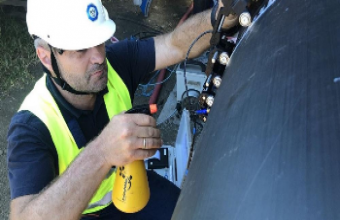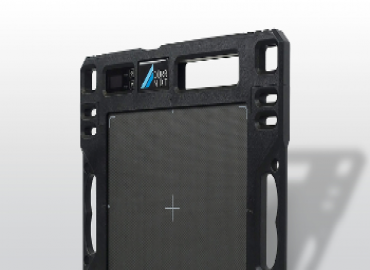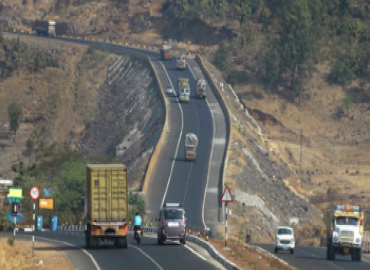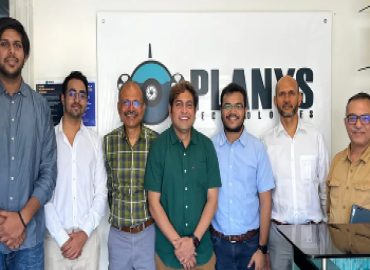Before final installation, GF Piping Systems evaluated the condition of each weld by ultrasound, using a sophisticated algorithm to predict future performance.
Pipeline adapts weld metal testing for seawater air conditioning systems.
The General Hospital of French Polynesia (French acronym CHPF) wanted a better way to cool its buildings. They looked for a solution that used the most common resource on earth and an innovative way to ensure the project's success.
Reaching Higher by Going Deep
CHPF, located in the capital city of Papeete, is the referral hospital for the entire nation, an overseas territory of France with more than 100 widely scattered islands in the South Pacific. Given the region's tropical climate, air conditioning is a high priority for healthcare facilities. The average annual temperature in Papeete is 79 degrees F, with high humidity during the rainy season. Cooling the facility with traditional air conditioning was energy-intensive, negatively affecting the environment and the hospital's bottom line.
CHPF partnered with Geocean to install the world's most extended seawater air conditioning system (SWAC) to counter both challenges.
Based in Cassis, France, Geocean is the marine and offshore works division of VINCI Construction Grands Projets. Its work focuses on near-shore and shallow-water construction projects where offshore gradually becomes onshore. With an emphasis on providing turnkey development, its capabilities encompass design, procurement, construction, and installation.
In areas with ready access to the ocean, SWAC systems provide a climate-friendly alternative. Since they exploit the already cold temperatures of ocean water (drawn from depths below 700 m), SWACs require far less electricity (as much as 75%) to achieve the same cooling results. According to a 2020 study in the journal Energy Efficiency, 1 m3 of water in a SWAC system can provide the same cooling energy as 21 wind turbines or a solar power plant the size of 68 football fields.
The appeal was clear to CHPF, but so were the challenges of Geocean's project. Once the necessary piping had been laid on the ocean floor, there would be no second chances—complete confidence in each one of almost 400 welds was essential.
The key to success for Geocean came from an experienced partner and a new technology: GF Piping Systems and its ultrasonic nondestructive (NDT) weld testing. The company initially developed its version of ultrasonic NDT for metal welds but adapted it to test joints on plastic piping systems.
With 60 years of experience, GF Piping Systems supplies safe and sustainable fluid transport systems. As demonstrated by its development of ultrasonic NDT for weld evaluation, the company focuses strongly on partnering with customers to find answers to problems.
Strengthening the Weak Link
Welds can be the Achilles' heel of any piping system. They are critically important for safe and reliable operation—but historically, as many as one in 300 welds can be expected to fail. Until recently, verifying the quality of welds in plastic piping systems at installation was impossible without destroying the welds.
Owners and project managers were faced with a painful dilemma: They could choose to destroy some welds—and hope that testing some in this way would provide a valid read on the condition of the others, or they could refrain from destructive testing and accept a higher level of economic and reputational risk. Conventional pressure testing could not predict a weld's future accurately.
GF Piping Systems looked at 25 years' worth of materials research to provide a better solution, cataloging the fine details of numerous welds and tracking how that information correlated with the welds' long-term strength.
This data allowed GF Piping Systems to develop a proprietary algorithm to assess the likelihood of future weld failure on a pass/fail basis, with results available within 24 hours.
Once on-site, inspectors deploy such techniques as time-of-flight diffraction and phased-array ultrasonic testing to gather information about weld status. Welds that don't pass can be replaced right away. Once all welds pass, it is safe to proceed with steps (such as closing a trench) that make future access to the welds difficult or impossible.
A Massive Undertaking
For Geocean's ambitious project in Tahiti, the importance of peace of mind on this score could scarcely be overstated.
The government of French Polynesia commissioned the SWAC system for CHPF, intending to help to phase out fossil fuels while reaping the benefits of lower energy consumption. Since SWAC relies on renewable resources and can reduce power demands, Ocean Energy Europe has called it "the perfect technology to decarbonize heating and cooling systems around the world's coasts." SWAC systems also are considerably quieter and more compact than traditional air conditioning equipment.
SWAC systems use cold ocean water to chill a closed loop of fresh water via a design of heat exchangers. The ocean water that the exchange has warmed is then returned to the sea. For the CHPF project, Geocean planned for a 3,800-m intake pipe that would extend into the ocean to a maximum depth of 900 m, with three pumps able to draw 1 million liters of water per hour.
The intake pipe sends water into the hospital air conditioning system at approximately 41 degrees F, while a 200-meter discharge pipe returns the water to the ocean at around 53 degrees F. The cooling occurs directly, through thermal contact, with no electricity generation. The pipelines are formed of NPS 710-mm high-density polyethylene (HPDE) pipes welded by the poly-fusion method. With a total length of 4,300 m, the system ranks the longest in the world.
To create such a large system without unnecessary disruption to the hospital, the pipeline was primarily assembled at a work site in Papeari, on the other side of the island. Upon completion, the entire length was towed through the ocean to a connection site near Papeete—subjecting the pipeline and all its welds to extreme conditions. Skilled technicians worked as high as nine stories above ground, then connected the multi-ton pipe to the hospital air conditioning network.
Another concern was that once the pipe was laid, the flexible polyethylene piping would conform to the irregular ocean floor, possibly subjecting welds to additional stress but in a place where repairs would be impossible. Advance knowledge of the welds' condition, with scientific certainty, could not have been more essential to the project's viability.
A Positive Outcome
Given the absolute necessity of knowing that the welds would hold, the SWAC project for CHPF provided an almost perfect test case for GF Piping Systems' ultrasonic NDT capability, both technologically and organizationally.
Source- www.thefabricator.com












